
Window Buying Guide
Are you ready to buy new windows?
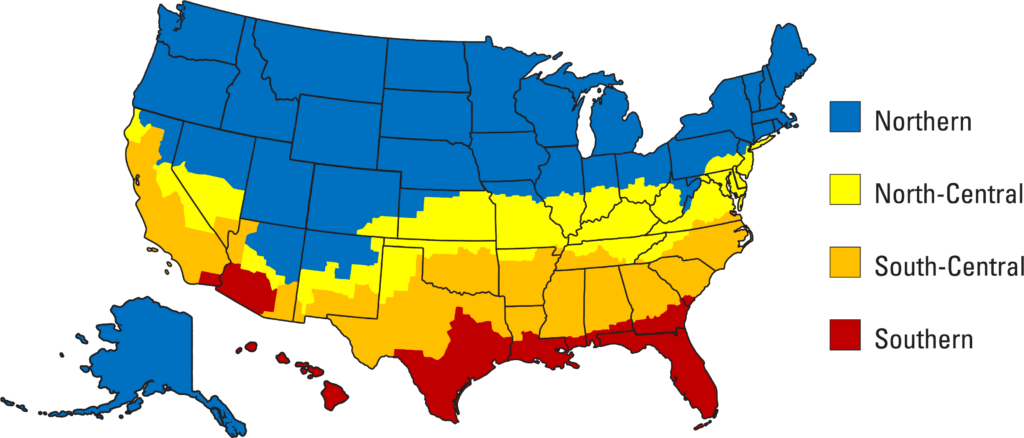 Our Window Selection Tool is your shortcut to finding the best options for your home and climate, but here’s a window buying guide if you’re keen to shop around for what’s available near you. It includes a step-by-step guide to help you through the process and information about which energy-efficient ratings you should look for based on your location.
Our Window Selection Tool is your shortcut to finding the best options for your home and climate, but here’s a window buying guide if you’re keen to shop around for what’s available near you. It includes a step-by-step guide to help you through the process and information about which energy-efficient ratings you should look for based on your location.
Before looking for new windows, make sure you know which climate zone you live in. You may be able to easily tell by looking at the ENERGY STAR® map to the right, but you can also search by county on the ENERGY STAR website.
The buying guide below will explain all the ratings, but you can learn more about what the ratings mean for different climate zones with this complete zone guide from ENERGY STAR.
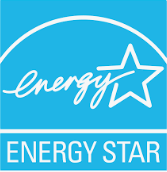
1. Meet the Energy Code & Look for the Energy Star
Windows must comply with your local energy code. Windows that are ENERGY STAR® certified often meet or exceed energy code requirements. To verify if specific window energy properties comply with the local code requirements, look for the NFRC label.
The ENERGY STAR logo typically accompanies a map similar to the one on the left that highlights which location the product is certified for unless it meets the requirements in all 50 states. In that case, it says “Certified in all 50 states”.
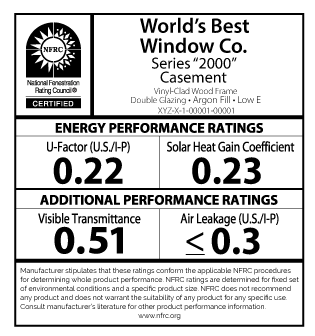
2. Look for Efficient Properties on the NFRC Label
The National Fenestration Rating Council (NFRC) label is needed to verify energy code compliance. The NFRC label displays whole-window energy properties and appears on all windows which are part of the ENERGY STAR program.
The NFRC label gives ratings for U-factor, Solar Heat Gain Coefficient (SHGC), Visible Light Transmittance (VT), and optionally Air Leakage (AL) and Condensation Resistance (CR) ratings.
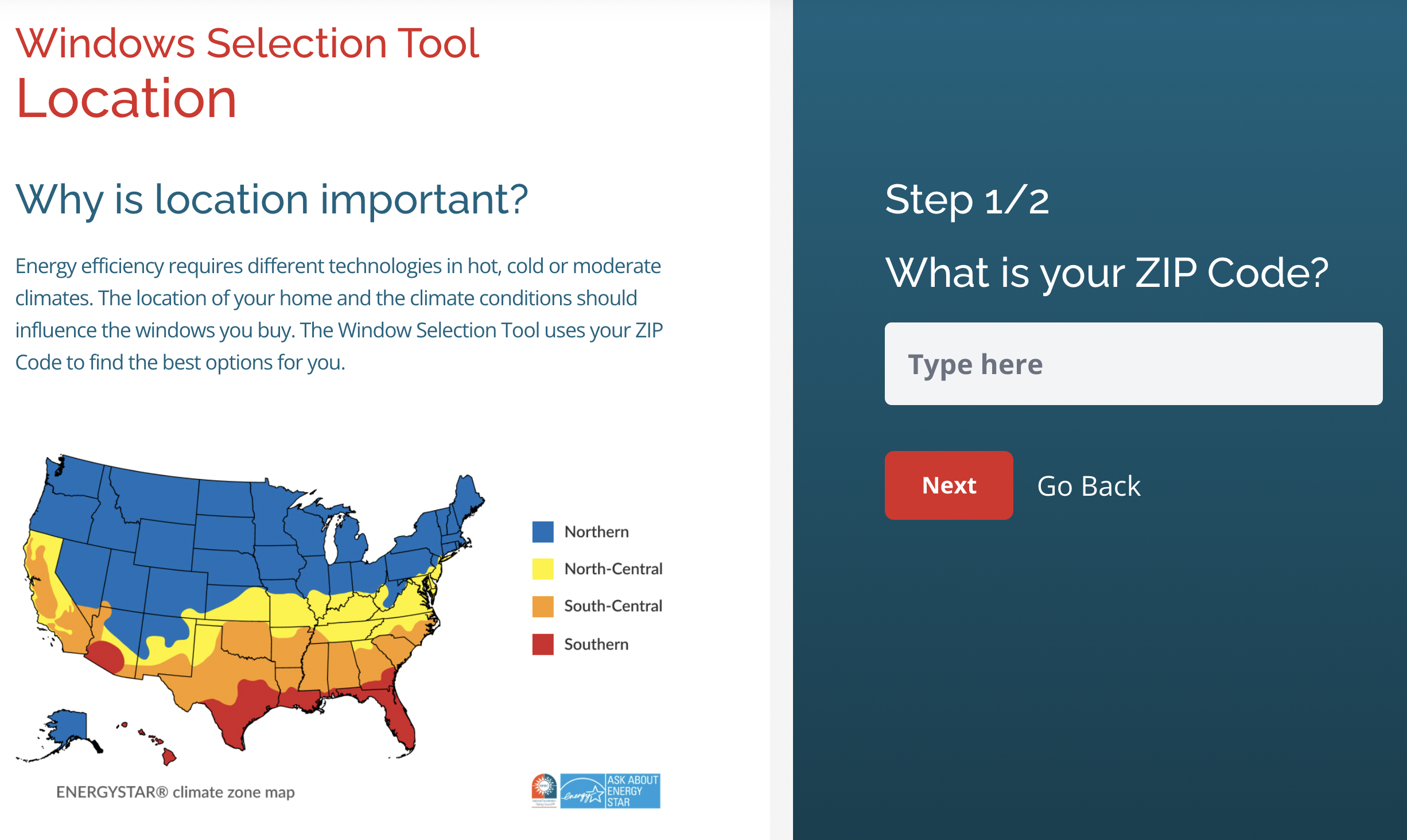
3. Compare Annual Energy Costs for a Typical House
Use the Window Selection Tool on the EWC site to see how different window options compare on estimated annual energy costs.

4. Ensure Proper Installation
Without proper installation, even the best windows may not perform as expected. If you’re working with a contractor, ensure they are qualified. Window manufacturers often maintain lists of approved installation partners most familiar with their products, as well as maintenance guidelines to extend the life of your windows.
To aid in proper installation, the Fenestration and Glazing Industry Alliance (FGIA) administers the InstallationMasters® program, which has certified thousands of individuals on industry-accepted installation practices and other critical information related to window installation.
Efficient Window Properties

U-Factor
This mandatory rating measures the amount of heat inside your home that can escape through a window and is the top-left number on all NFRC labels.
- Rating range: 0.10 – 2.00 (this may vary, but is a typical range)
- A lower number means less heat loss
- BUYERS TIP: In cold climates, windows with low U-factors help reduce heating costs
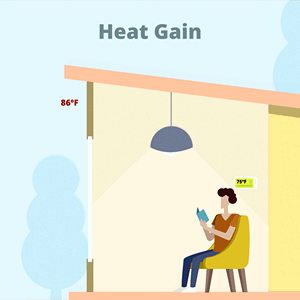
Solar Heat Gain Coefficient (SHGC)
This rating measures the amount of solar heat sun that can enter a home through a window and is the top-right number on all NFRC labels.
- Rating range: 0.00 – 1.00
- A lower number means less heat gain
- BUYERS TIP: In hot climates, windows with a low rating can reduce cooling costs
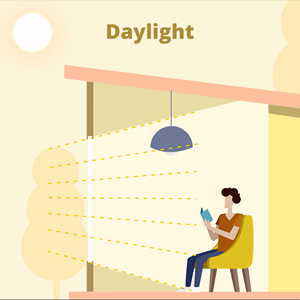
Visible Transmittance (VT)
This rating measures the amount of solar light that can enter a home through a window. The rating can be found on the middle or bottom row of an NFRC label on the left side.
- Rating range: 0.00 – 1.00
- A higher number means more natural light
- BUYERS TIP: Windows with a high rating may reduce your dependence on artificial lighting and lower monthly utility bills

Air Leakage (AL)
This rating measures the volume of air that can infiltrate a home through a window. This rating can be found on the middle or bottom row of an NFRC label on the right side.
- Rating range: less than or greater than 0.3
- A lower number means less air leakage
- BUYERS TIP: windows rated higher than 0.3 in this specific category disqualify a building from ENERGY STAR certification

Condensation Resistance (CR)
This rating measures a window’s ability to prevent moisture on the interior of the window. This rating can be found on the bottom row of the NFRC label on the left side.
- Rating range: 1 – 100
- A higher rating means less condensation on and around a window
- BUYERS TIP: a higher rating is better but particularly important in cold climates
Why Energy-Efficient Windows Matter
Save Money
Efficient windows save you money in two ways. Replacing your existing windows with new and efficient ones can cut your monthly utility bill by as much as 15 percent. A second chance to save money comes when it’s time to replace heating and cooling systems because a smaller and less-expensive system will often do the job.
Enjoy Natural light
Efficient windows give you the solar rays you want in your home but block the ones you don’t, including ultraviolet light. Technologies such as low-e (emissivity) coatings allow beautiful natural light in your home while also lowering exposure to harmful ultraviolet rays. These same technologies also protect carpets, paintings, wood, and other valuable furnishings from fading and sun damage.
Control Comfort
Efficient windows help keep interior temperatures stable. In cold climates, they block more outside air from entering a home and minimize the differences in temperature between the glass surface and the rest of the home. In hot climates, technologies such as low-e (emissivity) coatings prevent hot, stuffy air.
Cut Condensation
Condensation forms when the temperature of a window’s interior surface is significantly colder than the air inside. It can lead to mold and mildew inside a house and block views. Efficient windows have warmer interior glass which is much closer to the air inside.
Eligibility for Financing and Incentives
Efficient windows are a great investment in your home’s comfort and a way to lower monthly utility bills. Buying them often gives you access to federal, state, and local rebates and tax incentives, which makes them less expensive than the sticker price would indicate.